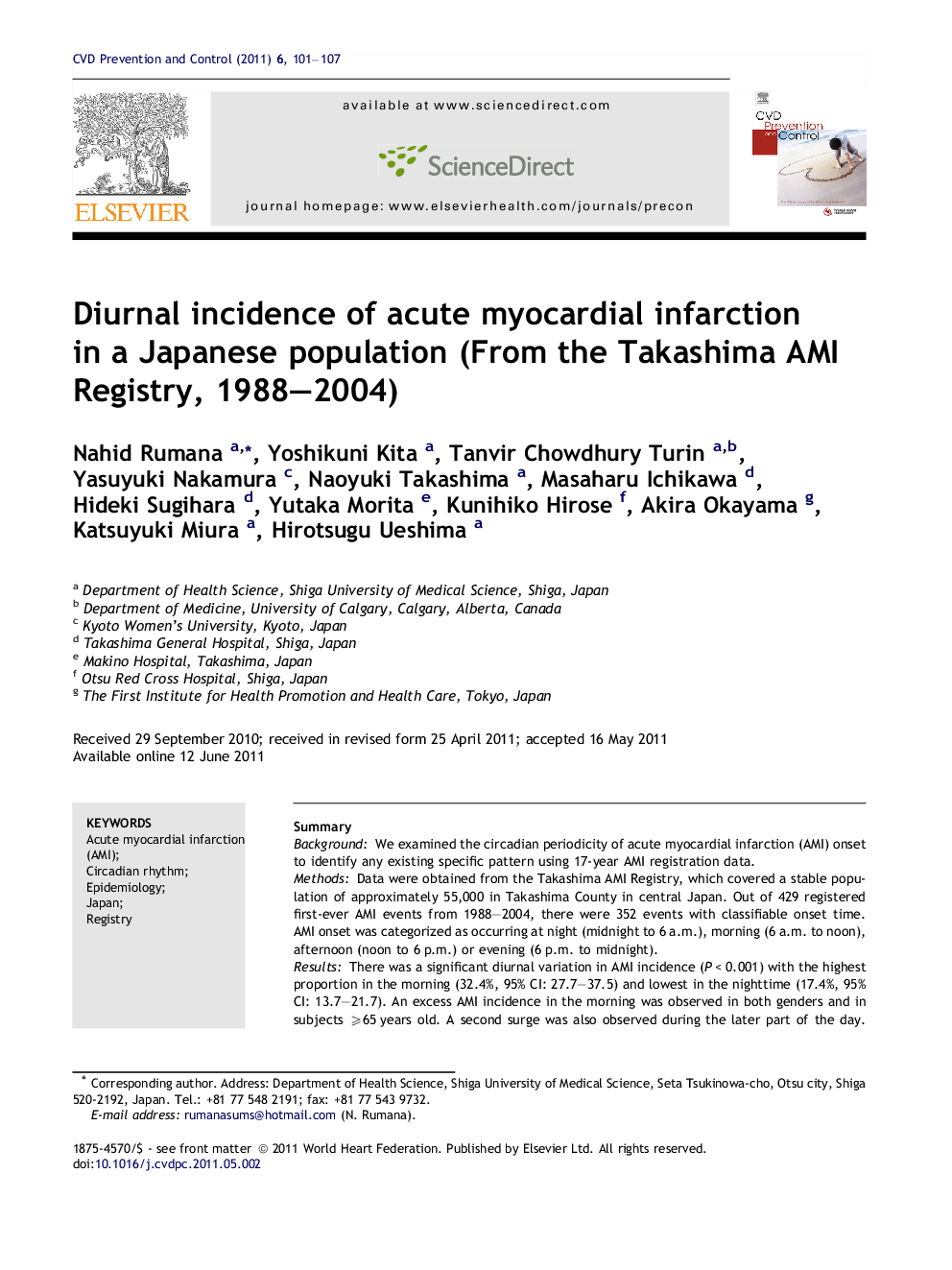| Article ID | Journal | Published Year | Pages | File Type |
|---|---|---|---|---|
| 2909537 | CVD Prevention and Control | 2011 | 7 Pages |
SummaryBackgroundWe examined the circadian periodicity of acute myocardial infarction (AMI) onset to identify any existing specific pattern using 17-year AMI registration data.MethodsData were obtained from the Takashima AMI Registry, which covered a stable population of approximately 55,000 in Takashima County in central Japan. Out of 429 registered first-ever AMI events from 1988–2004, there were 352 events with classifiable onset time. AMI onset was categorized as occurring at night (midnight to 6 a.m.), morning (6 a.m. to noon), afternoon (noon to 6 p.m.) or evening (6 p.m. to midnight).ResultsThere was a significant diurnal variation in AMI incidence (P < 0.001) with the highest proportion in the morning (32.4%, 95% CI: 27.7–37.5) and lowest in the nighttime (17.4%, 95% CI: 13.7–21.7). An excess AMI incidence in the morning was observed in both genders and in subjects ⩾65 years old. A second surge was also observed during the later part of the day. The morning excess of AMI incidence was similar across seasons and days of the week. For all AMIs, the age and gender adjusted risk was 1.82 (95% CI: 1.33–2.49) times higher in the morning than at night.ConclusionA diurnal pattern of AMI onset was observed in a Japanese population with a morning peak and nighttime trough, and the pattern was similar across seasons of the year and days of the week.
